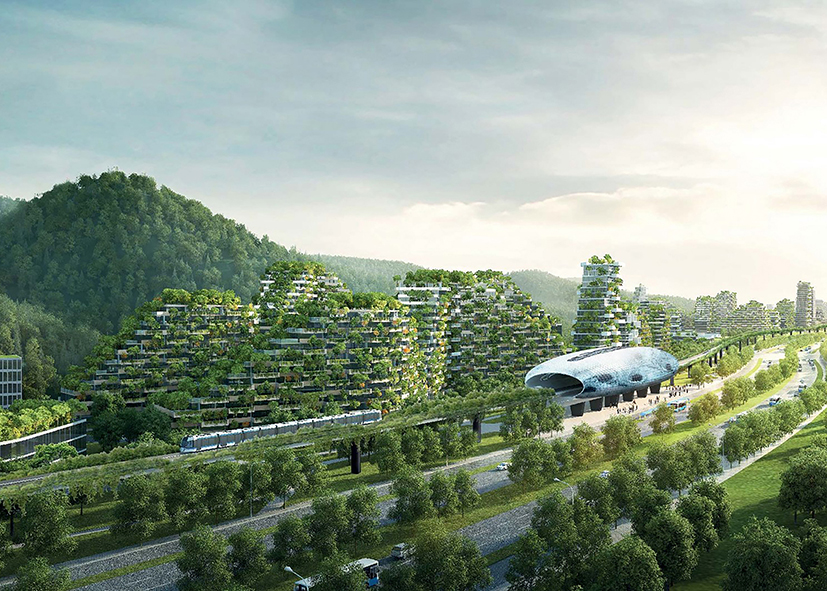From the City as Forest to Forest-City
DOI:
https://doi.org/10.19229/2464-9309/2122017Keywords:
city, landscape, renaturalizationAbstract
The relationship between city, architecture and nature dates back to the idea of city set up by the Enlightenment. A new idea of city surrounded by nature would had replace the compactness of the Baroque urban structure. From Laugier’s idea of city as a forest to the development of new urban prototypes represented within an idealized natural context, as in the drawings of Boullèe and Ledoux, emerges the search for new architectural and urban models alternative to the consolidated city. The contribution analyzes how this idea of city survived until modern times and how today seems to have come back to topicality in an attempt to re-naturalize the city.
Downloads
Article Metrics Graph
References
Aymonino, C. (1966), “La formazione di un moderno concetto di tipologia edilizia”, in Aa.Vv., Rapporti tra la morfologia urbana e la tipologia edilizia, Cluva, Venezia, pp.15-51.
Caja, M., Landsberger, M. and Malcovati, S. (eds) (2016), Tipo Forma Figura – Il dibattito internazionale – Antologia 1970-1990, Libraccio, Milano, p. 155.
Caja, M., Landsberger, M. and Malcovati, S. (eds) (2012), Tipologia architettonica e morfologia urbana – Il dibattito italiano - antologia 1960-1980, Libraccio, Milano.
Aymonino, C. et alii (1970), La città di Padova – Saggio di analisi urbana, Officina, Roma.
Boeri, S. (2017). [Online] Available at: www.stefanoboeriarchitetti.net/it/portfolios/citta-foresta/ [Accessed 10 July 2017].
Burtin, J. (1990), “Vom Rondell zum Mehringplatz”, in Düttman, W. and Ochs, H. (ed.), Werner Düttmann, verliebt ins Bauen. Architekt für Berlin – 1921-1983, Birkhäuser, Basel-Berlin.
Caja, M. (2012), “Autonomia/anatomia di un edificio – L’Altes Museum di Karl Friedrich Schinkel”, in Loi, M. C. and Neri, R. (eds), Anatomia di un edificio, Clean Edizioni, Napoli, pp. 72-83.
Fabbrizzi, F. (2003), Architettura verso natura, natura verso architettura, Alinea, Firenze.
Gizmo (2017). [Online] Available at: www.facebook.com/gizmoweb/videos/10155618567734985/ [Accessed 10 July 2017].
Kaufmann, E. (1973), Da Ledoux a Le Corbusier (Leipzig-Wien, 1933), Mazzotta, Milano.
Koolhaas, R. (2010), Delirious New York – Un manifesto retroattivo per Manhattan (Oxford, 1978), in Biraghi, M. (ed.), Electa, Milano.
Laugier, M. A. (1987), “Saggio sull’architettura”, in Ugo, V. (ed.), Aesthetica, Palermo.
Monestiroli, A. (1979), L’architettura della realtà, Clup, Milano.
Pundt, H. G. (1972), Schinkel’s Berlin – A study in environmental planning, Harvard University Press, Cambridge (MA).
Rowe, C. and Koetter, F. (1981), “La crisi dell’oggetto e la superficie instabile”, in Id., Collage City [Cambridge (Mass.), 1978], Il Saggiatore, Milano, pp. 87-137.
Tafuri, M. (1980), La sfera e il labirinto – Avanguardie e architettura da Piranesi agli anni ’70, Einaudi, Torino.
Ungers, O. M., Kollhoff, H. and Ovaska, A. (eds) (1978), The Urban Garden – Student projects for the Südliche Friedrichstadt, Berlin, Studio press for architecture, Berlin.
Very, F. (1990), “La città come foresta. Laugier e Le Corbusier”, in Ugo, V. (ed.), Laugier e la dimensione teorica dell'architettura, Dedalo, Bari.

Downloads
Published
How to Cite
Issue
Section
License
This Journal is published under Creative Commons Attribution Licence 4.0 (CC-BY).
License scheme | Legal code
This License allows anyone to:
Share: copy and redistribute the material in any medium or format.
Adapt: remix, transform, and build upon the material for any purpose, even commercially.
Under the following terms
Attribution: Users must give appropriate credit, provide a link to the license, and indicate if changes were made; users may do so in any reasonable manner, but not in any way that suggests the licensor endorses them or their use.
No additional restrictions: Users may not apply legal terms or technological measures that legally restrict others from doing anything the license permits.
Notices
Users do not have to comply with the license for elements of the material in the public domain or where your use is permitted by an applicable exception or limitation.
No warranties are given. The license may not give users all of the permissions necessary for their intended use. For example, other rights such as publicity, privacy, or moral rights may limit how you use the material.


















































































